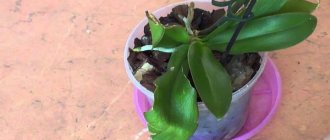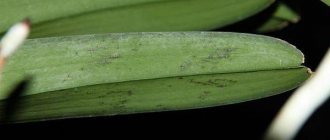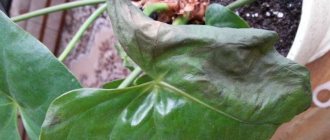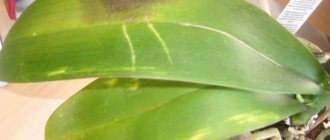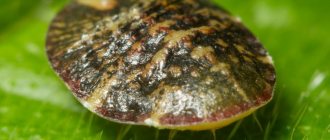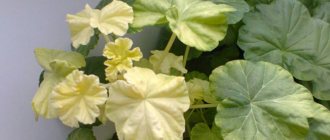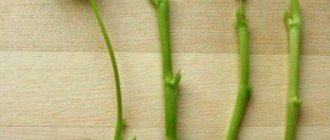Features of flower growth
Geranium can be called an unpretentious flower ; it loves a lot of sun, warmth and soil that allows air and water to pass through. The content conditions are as follows:
- good watering in summer and moderate in winter;
- bright sunlight, but without direct rays;
- warm air;
- loose, well-drained soil;
- moderate fertilizing with nitrogen-phosphorus-potassium fertilizers;
- slightly acidic soil;
- pruning and pinching to form a bush.
How to properly care for it to bloom?
In order for geranium to bloom, it is necessary to create certain conditions, maintain them and carefully monitor the health of the flower. We present tips for beginners on how to care for a plant at home in a pot so that it blooms?
- Geranium likes to be cramped, so in order for it to produce buds you need to transplant it into a small pot. As soon as the root system fills almost the entire space of the pot, the geranium will be able to devote all its energy to flowering.
- To grow geraniums, you should choose soil suitable for flowering plants.
- Flowering can be achieved with regular fertilizing. Preference should be given to potash fertilizers. It is also sometimes advisable to apply nitrogen fertilizing. It is better not to use organic matter, it can harm the plant.
- Annual pruning has a beneficial effect on the formation of buds. This way you can provide additional strength for flowering.
Diagnosis of the problem
Small light spots appeared
Clear yellow spots with smooth edges on the front side of the sheet, and on the inside a brown coating is rust, which often appears if the air is warm with high humidity.- A small fluff on the leaves, light spots, while the plant becomes lethargic and unattractive with dark formations on the leaves - this is Botrytis, a parasitic fungus. The disease appears from excess humidity.
- A ring pattern on pale green spots that gradually merge, while the plant stops growing and developing, flower stalks do not form - this is ring spotting. The cause of this disease is nematodes living in the soil.
- Another serious infection is the appearance of spider mites. Yellow spots appear on the leaves, they gradually begin to fall off, while the plant seems to be entangled in a small, barely noticeable web.
Brown drawings
- Brown spots appeared on the lower leaves - this is gray rot; if the plant is not treated, then over time the spots become covered with a gray coating, which tightly covers first the geranium leaves, then the stem.
- If a light spot appears in the middle of the brown spots, then this is Alternaria blight. The disease manifests itself as follows: the leaves turn yellow and dry out, while the plant stops gaining color. If the air humidity is high, then all parts of the geranium become covered with a velvety coating.
- Red-brown spots indicate that the plant is in direct sunlight, while the air temperature is much lower than optimal (why do geranium leaves turn red?).
Consequences of improper care
When grown indoors, geraniums have special care requirements to ensure optimal growth and prevent disease. Without proper care, indoor geraniums are vulnerable to rot and fungus. These ailments can also attract certain insect pests that typically attack other houseplants.
Rotting of geraniums occurs with excessive watering. Geranium tolerates dry soils better than excessively wet ones. And excessive watering leads to rotting of the plant. If the soil is dry to the touch at a depth of 10 to 15 cm, you can water the flower. If it is still slightly damp and cool, the plant no longer needs water.
Flowering failure occurs due to improper lighting. House geraniums that do not receive enough light will have fewer flowers. Keep geraniums in areas where the sun will shine most of the day. For example, on windows facing south or west. If you don't have a suitable window, move the plant outside (in summer) for a day or supplement the flower's needs with artificial lighting. In addition, the following factors can lead to the absence of flowers.
- Decrease in room temperature. If the geranium is frozen, no flowering should be expected.
- The pot size is too large, as a result of which the plant will spend all its energy on development.
- Excessive fertilization. Geraniums grown indoors usually do not require frequent fertilization. Planting geraniums in a potting mix that contains 1 part soil, 1 part sand and 1 part peat will provide enough nutrition for the first 2-3 months of growth. After this, use a water-soluble fertilizer with a nitrogen-potassium composition in equal proportions and at the rate of 1 teaspoon per 4 liters of water. If geraniums are kept indoors year-round, fertilize only during growth periods.
- Lack of nutrients in the soil.
- Violation of pruning of shoots.
Improper care can easily lead to illness. For example, swelling appears as spots on the leaves, which subsequently become corky and brown. Leaves may turn yellow and fall off. Swelling is caused by excessively wet, warm soil and moist, cool air, or is due to the fact that the roots absorb more water than the leaves. As a result, the cells swell and burst. Therefore, avoid excessive watering and hyperventilation in the apartment.
Yellowing of the leaves occurs due to insufficient watering, drying also occurs due to insufficient watering of the plant.
Causes of leaf blade disease
In most cases, improper care of geraniums leads to changes in leaf color.
For example, yellow formations may appear on leaves if errors are made in care:
- lack of moisture - the leaves begin to turn yellow at the edges;
- excessive watering - against the background of lethargy of the geranium, yellowness appeared;
- poor lighting - leaves can not only turn yellow, but also fall off.
Brown spots on the leaves of a flower can appear not only from diseases, for example:
the flower grew, and the flowerpot became too small for it;- the soil in the hill is poorly drained;
- constant drafts;
- lack of light and heat;
- excess nitrogenous fertilizers;
- planting outdoors without pre-cultivation of the soil.
In addition, there are insects such as:
- whitefly;
- aphid;
- mealybug.
They cause various spots to appear on the leaves.
You can learn more about common geranium leaf diseases here.
Geranium diseases, treatment and prevention
Pelargoniums most often get sick due to waterlogging of the soil. It is the flooding of the plant that gives impetus to the development of various types of rot and spotting. The disease progresses especially quickly if the room is stale, stale air, too cold or, conversely, too hot. Pelargonium gets sick from a deficiency of microelements, but also from overfeeding. These problems weaken the immune system. As a result, the plant becomes more easily infected with fungal or viral infections.
Problems caused by metabolic disorders and care errors
Diseases related to care and metabolism are not contagious. Plants with etiolation, chlorosis, deficiency or excess of nutrients are not sent to quarantine. But these ailments cannot be left without treatment, because sooner or later they will lead to more serious problems.
This pelargonium is suffering from care errors; the leaves have turned red either from hypothermia or from too much direct sun.
Etiolation is a disease of light deficiency. If pelargonium does not have enough light, it stretches unsightly, the leaves become smaller and lighter. Such a plant will not bloom. It is not difficult to cure: place the geranium on the sunny side, and in winter add artificial lighting. Just be careful, get used to bright light gradually so that there are no burns. In addition, for the harmonious formation of a flower, it is useful to turn it towards the light with different sides.
With a lack of light, the leaves become smaller and lighter, the stems elongate
Edema, or edema, mainly affects ivy-leaved pelargoniums, less often other species . The cause of the disease is non-drying soil combined with cold and humid air. The roots absorb water, but the leaves do not have time to evaporate it.
Too much watering and humid air lead to swelling of the leaves.
The tissue ruptures and watery pads form on the underside. Affected leaves die or lose their decorative properties. The pads enlarge and become coarser, acquiring a brownish color. Therapeutic measures include drying the soil, adjusting watering, and reducing air humidity. Prevention - good drainage and fresh air.
Magnesium deficiency causes leaves to turn yellow in the center.
Chlorosis is a disruption of the process of photosynthesis. Symptoms of the disease are changes in leaf color and slower growth. Usually, when talking about chlorosis, they mean iron deficiency. But in pelargoniums, the lack of other chemical elements also affects health and appearance. For example, a deficiency of magnesium causes yellowing of the center of the leaves, a lack of manganese causes a green mesh to appear along the veins with yellowness inside, the edges of the foliage turn white from a lack of nitrogen.
White edges of leaves are a lack of nitrogen
In all cases, there is only one solution - to choose a mineral complex containing the necessary components. For example, iron chelate (Antichlorosin) for deficiency of this element. Or a fertilizer balanced in composition.
Treatment of chlorosis is the selection of a nutritional complex with deficient elements or transplantation into fresh soil
Pelargonists note that the preparations Uniflor-Rost, Uniflor-micro, plant regenerator Pokon Green Power, Agricola Aqua for yellowing of leaves have proven themselves well.
But no less than a deficiency of nutrients, their excess is harmful for pelargonium. Too much nitrogen in the soil will cause the leaves to turn yellow; too much phosphorus will cause the edges to become brown and dry. Therefore, it is better to slightly underfeed the geranium.
Phosphorus is beneficial for plant flowering, but its excess is harmful to leaf health
Metabolic problems can also be solved by transplanting pelargonium. The right substrate should have everything you need for growth and health.
Geraniums find it difficult to take root in a new place. Immediately after transplantation, they need gentle care. Pelargonium is placed in a warm place. Shade from direct sun. Water moderately; unestablished roots easily rot. No spraying is necessary. You can add stimulants to irrigation water: epin or zircon.
Too concentrated a fungicide solution can harm pelargonium
Pelargonium can get sick after using herbicides or fungicides. The former are used to control weeds in open ground, the latter - to treat rot. In this case, transplantation or gentle transshipment will help. may have to get rid of the affected foliage, but it will grow back. The main thing is the condition of the root. If it is healthy, the plant can be treated.
Pelargonium treated with herbicide may lose all leaves
Infectious diseases
A fertile environment for the development of pathogens of infectious diseases is waterlogged and unsterilized soil. Various fungi, bacteria and viruses multiply there quickly. Pelargonium that has contracted an infection must be isolated. If a green patient is left among healthy people, everyone can become infected. Some infections are so fleeting and dangerous that immediate destruction of the diseased plant is required.
If you do not pay attention to pelargonium disease, it may die from infection.
Prevention of infectious diseases:
- attentive, without excess, watering;
- dry air, especially in a cool room;
- mandatory soil sterilization;
- pest control;
- quarantine for new plants.
How to get rid of the problem - detailed instructions
First of all, the flower is quarantined so that it does not infect other crops in the apartment. A careful examination of the roots, soil, leaves, and stems will help you make the correct diagnosis.
Rust
If your geranium is affected by rust, then you should take the following measures::
- move the flowerpot with the plant to a dry and cool place;
- reduce watering to a minimum;
- diseased leaves should be cut off;
- treat geranium with Topaz - a special preparation.
It is worth understanding that a flower can be cured only at the initial stage of infection.
Fungus
If geranium is infected with Botrytis fungus, you will have to act as follows:
- cut off all affected areas;
- treat with systemic fungicides;
- reduce watering;
- loosen the soil.
Ring spot
If a flower is affected by this disease, it cannot be cured.
As soon as you notice the first symptoms of ring spot, destroy the plant and the soil in which it was located.
Spider mite
To get rid of spider mites, you need to put in a lot of effort. It is worth noting that this parasite is a microscopic animal, so it is useless to use insecticides . The algorithm of actions is as follows:
- Give the plant a warm shower with laundry soap - this process destroys 50% of the entire parasite population.
- Wash everything that was near the plant, disinfect the windowsill and window, wash the curtains.
- Water the plant and pack it in a plastic bag for 3 days. The tick does not tolerate high humidity.
All these actions will help only at the initial stage of the disease; if the web has entangled the entire plant, it will have to be destroyed.
Alternaria blight
Often a plant becomes infected with this disease through the soil ; it can be cured as follows:
- change the soil in the flowerpot;
- treat geranium with Ridomil Gold or Skor;
- ventilate the room daily;
- loosen the soil;
- use the optimal humidification regime.
Insects can be removed in the following ways:
- Wash the flower with soapy water.
- Wipe with a cotton swab soaked in an alcohol solution.
- Treat with medications.
How to sow pelargonium seeds at home
In order not to waste extra time on preparation, you can order from us and combine a mini-greenhouse, any ready-made soil, superphosphate and a phyto-lamp into one order with seeds. This way you will save on delivery and get a starter kit that can be used repeatedly to grow healthy and strong seedlings of any crop.
Sowing rules:
- It is better to soak the seeds overnight using a cotton pad or napkin.
- The swollen seeds should be distributed over the surface of the substrate, sprinkled with a centimeter layer of soil and properly moistened with a spray bottle.
- The lidded container with seeds should be placed in a dark and warm place before germination - the optimal temperature during this period is +21-23 degrees, but not higher than +25.
- After the shoots emerge, the lid or film must be removed and the container moved to a well-lit windowsill, or better yet, under a phyto-lamp.
- The temperature needs to be reduced to about +15 degrees, which can be easily done by ventilation on the window.
- After the appearance of 3 true leaves, the seedlings need to be picked - add superphosphate to the soil for the picking cups according to the instructions, which is needed for the proper development of plants and abundant flowering in the future.
Congratulations, you have grown your first pelargoniums from seeds! All of the above applies to zonal pelargoniums. Ampel varieties require slightly different agricultural technology: the temperature for both germination and pickled seedlings should be 3-5 degrees lower. Temperature shock in seeds and small seedlings of ivy-leaved pelargonium occurs at a temperature of +22 degrees.
Preventive measures
Geranium is resistant to infections, but preventative measures will help avoid problems. Observe the behavior and condition of the plant , and it is worth maintaining:
- optimal soil moisture;
- temperature regime comfortable for the plant;
- good lighting;
- correct and timely feeding.
Typical mistakes in caring for geraniums lead to loss of pigment or leaf disease. Read our articles about why a flower’s leaf blade curls or turns white and how to solve the problem.
Despite the fact that geranium is an unpretentious plant, it needs to be looked after and constantly taken care of. If you are vigilant, you can easily avoid illness or treat the infection at an early stage.
Errors in care
Unsuitable conditions and failure to follow care instructions can affect the health of the flower. Reasons for the appearance of light colored leaves:
Lack of sunlight. Low light can cause leaf color to lighten or completely white leaves to appear. This problem is especially acute in winter. Lack of nutrients. Depleted soil and lack of fertilizing can cause not only lightening of the leaves, but also slower growth
It is important to regularly feed your indoor flower during flowering in the summer. The most common symptom is lightening of the leaf edges. Excessive feeding
Not only a deficiency, but also an excess of nutrition is harmful to pelargoniums. Frequent application of fertilizers is simply dangerous. High temperatures. Too warm and dry climate harms flowers. In winter, heating radiators dry out the air, having a negative effect on the plant.
Having assessed the listed factors, you can find the reason why geranium leaves lighten. Once a problem is identified, action should be taken immediately.
Even one white leaf is a signal to take action
